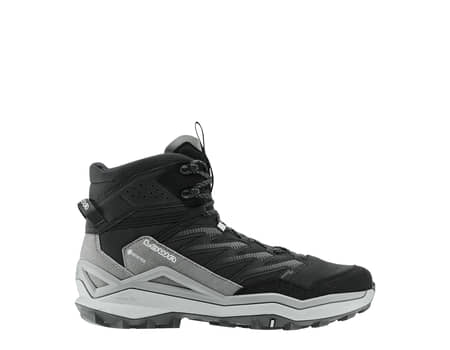What it must have been like in the past... when people foraged for wild herbs such as goutweed in nature to survive famines or to ensure their vitamin intake during the world wars. Hard to imagine in this day and age of food supplements. Enough incentive for me to mobilise my crew and try out a herb hunt as a culinary micro-adventure here in the Hallertau. Our plan is to collect enough wild herbs in the great outdoors to bake a crumpled bread. This will be our first attempt, and it's only 3 degrees outside. So, maximum effort! We are curious and our mouths are already watering.
Conveniently, my fellow adventurer Tobias knows plenty of edible wild herbs as well as some places where they hopefully already grow in mid-March. Even with a herb book, I wouldn't have had a chance of completing the task in half a day and without collateral damage. Some herbs, such as wild garlic or lesser celandine, should not be eaten after they have flowered, while others, such as lily of the valley, which looks similar to wild garlic, are very poisonous. Like Deadpool, we may give "maximum effort", but unfortunately we don't have the self-healing powers of the Marvel superhero. The best thing to do is to ask an expert such as a wild herb educator or carefully feel your way around with the help of good literature. Or you could be lucky and have friends who know what they're doing and lend a hand. Like our ladies Elena and Anna, who help with the collection and prepare the yeast.
We start on a fresh Sunday afternoon, the last few weeks have been cold with night frosts and it has even snowed a few times. If we find any herbs, they are certainly still tender, fresh and flavoursome. We climb up a steep meadow slope a few hundred metres from Elena and Tobi's home. Elena grimaces as a cold wind blows against us. But we soon gain hope. We discover the first splashes of colour in the still rather brown and dreary surroundings: purple and white crocuses herald the arrival of spring alongside snowdrops and sky-blue bluebells.
A few minutes later, we arrive at our first herb spot, a small, shady and damp strip of forest interrupted by meadow slopes. Here we first find the tart, somewhat pungent-tasting lesser celandine (risk of confusion with buttercups!). If the taste test is "pungent and bitter", drying before eating helps. Due to its high vitamin C content, this herb used to be part of the travelling provisions of seafarers, who had lemons and sauerkraut with them on their sea voyages, but usually no vegetables or fruit. This enabled them to prevent the vitamin C deficiency disease scurvy. This is why the old name for scurvy is "Scharbock". Isn't etymology a beautiful thing? A few metres further on, fresh goutweed sprouts from the ground over an area of around 75 square metres. For most people, the umbellifer is a weed that overgrows the garden. Raw, goutweed tastes and smells a little like carrots or parsley mixed with the resinous flavour of a mango, but cooked it tastes like spinach. You can easily recognise it by its triangular leaf stalk and distinguish it from inedible and poisonous species such as spotted hemlock or broad-leaved fleabane. I start collecting while Elena and Tobi - bird conservationists that they are - restock the bird feeder in the neighbouring wood. Harvesting is relatively tedious because the goutweed only sticks out of the ground by about a few centimetres, but its freshness is unbeatable.
A little later, as we cross a thicket of blackthorn on a small path (we absolutely have to come back here in a month's time for the blossom!), we are surprised by a melancholy sounding Klü-Klü-Klü-Klü: the falling series of calls of a grey-headed woodpecker, which is something special because this species of woodpecker lives largely in secret. We flirt with it once or twice by imitating its call, but then leave it alone so that it flutters away and we move on. We find a carpet of chickweed in a disused hop garden. Good for us, because chickweed is part of the dough for our bread. Our anticipation grows; none of us has ever made anything as elaborate and savoury as bread with wild herbs. In the meantime, we have to keep warming our clammy fingers in our gloves, as the cold wind is making us lose our touch. We snack a little on the side, the chickweed tastes like young, raw corn or peas, always surprising. After this station, Elena takes her leave to prepare the dough with Anna.
Tobi and I stop off at a sandy vine with gorse and elder bushes. Although it looks relatively brown and earthy here, the small strip of slope turns out to be a diverse microcosm. We are not interested in the bitter foamwort and field violets, but next to them we find the versatile meadow bedstraw (tastes like a mixture of rocket and lettuce) and speedwell, which has a bitter-tart and slightly balsamic flavour and is a traditional medicinal herb. It's slowly getting dark, with light hail, and our basket is only half full. We still need something if we want our plan to succeed!
I'd like to find some wild garlic and nettles. The latter are rich in minerals, vitamins A and C, iron and protein and would fill our basket more quickly as they usually grow in groups. I urge us on for a short walk through the forest. On the way there, I am magically drawn to a dirt track that is accompanied by a strip of meadow about 1 metre wide. I take a closer look, push aside the long, wilted grass and discover... nettles! Either it's pure luck, because we hadn't seen any sign of them until then. Or I've seen stinging nettles (if necessary, harvest them with scissors or gloves and wash, roll and chop the leaves to neutralise the effect of the nettle hairs) so often in similar surroundings while walking, hiking or jogging that I subconsciously knew where to find them. A crazy experience. A bit embarrassing because I would like to know more about the plants and their locations. But also kind of cool that you seem to have such information subliminally. You'd just have to activate it. The purple deadnettle next door tastes surprisingly woodland-mushroomy, an added bonus for our bread!
We don't find any wild garlic on our short walk in the forest, but we do find a few nettles and some chickweed at the edge of the forest. We come across two hares, in this case competitors for the fresh herbs. When it is almost dark, we discover a large patch of goutweed in the sparse forest between young blackberry plants. The plants here are already much larger than at the very beginning of our venture and we take the opportunity to fill our basket. We spent a good four hours collecting and photographing, and now we hope that part two, baking our herb bread, goes just as well as the collecting.
In the meantime, our ladies have already prepared the dough with spelt flour, water, yeast, salt, honey, olive oil and chopped chickweed, which is used for colouring and to give the flavour a further note. Now chop the mozzarella, onion, wild garlic from the previous day and the remaining herbs, add salt and pepper and spread the mixture on the rolled-out, greenish dough. It looks promising, we've got just the right amount of herbs together. We cut the dough into strips and fold it so that it fits into a baking tin. The crumpled bread is then placed in the oven for 30 to 60 minutes at 180 degrees. In the meantime, Tobi and I cook a soup outside by the campfire, which has also been given a few of our herbs. We refine our dinner in proper style with ingredients from our homeland: venison salami and peppercorns from my father's hunting grounds, mum's hazelnut muffins with nuts from my aunt's plantation and blueberries that I harvested and froze last summer in the Feilenmoos. So simple and such a luxury at the same time... Despite our hunger, we pause and enjoy such good, natural and healthy food. And the star of the show is our freshly baked herb bread. It's very "green", amazingly good and tastes great with a wide variety of dishes. Even though we may flavour it more strongly next time, we are extremely satisfied with our first attempt. Our day ends with full bellies, fingers burning from nettles and lots of laughter. Maximum effort - maximum result.






